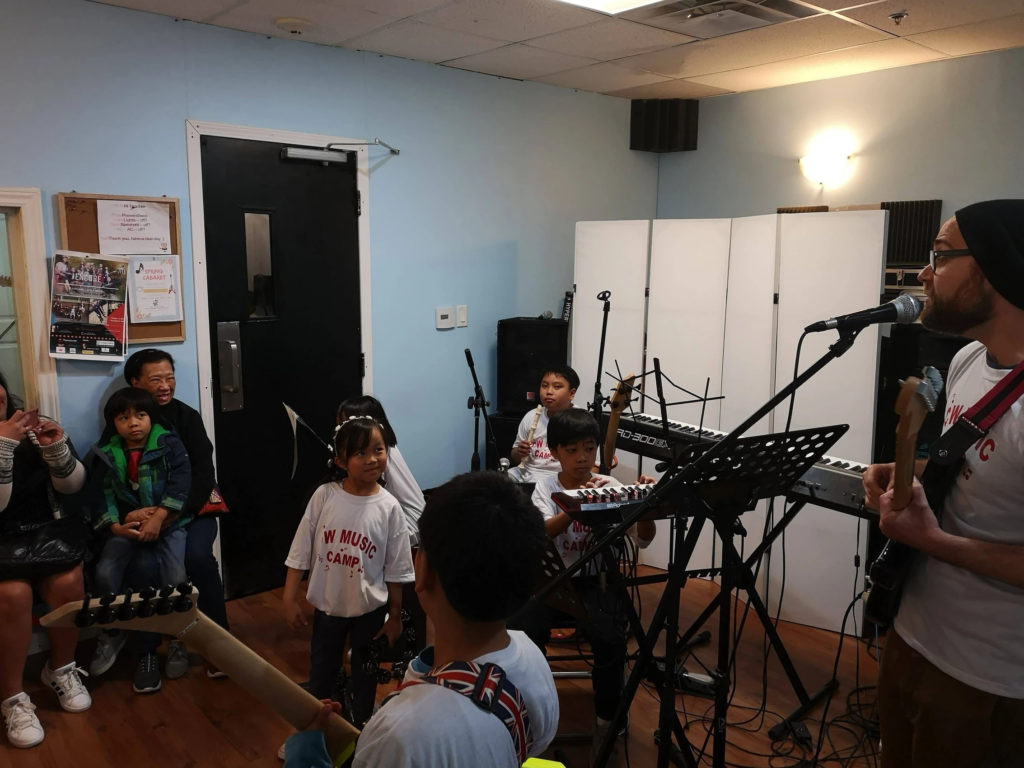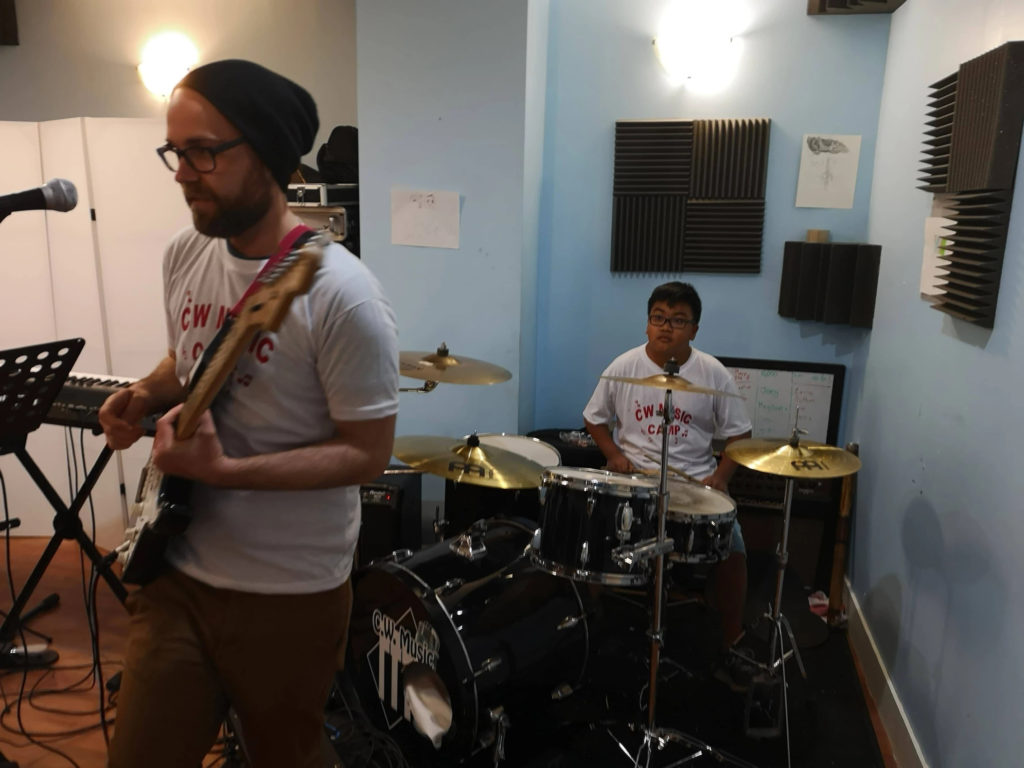
The Daily Shed: An Instructor’S Practice Habits
My name is Marc Rivest. I am an instructor at CW Music, and also a freelance performer gigging regularly in the metropolitan Vancouver area. In this article, I will be documenting my daily rehearsal process. I hope it will provide insight into the practice routine of your instructors and inspire students of CW to fine-tune their own practice habits.

The first step of my daily shed actually begins the night before. When I was in the Jazz Studies program at Capilano University, I got into the habit of writing daily to-do lists in order to outline specific concepts I wanted to focus on. I still do this, and it helps set practice goals. A freelance performer must play many roles in order to get work; booking agent, concert promoter, videographer, recording engineer, etc. As such, my daily to-do lists include every music-related task to be completed the next day. For example, some days I need to promote gigs. Other days, I will need to record and edit video content to post online. Regardless of the task, they always serve the same goal: a successful show.
The next step begins after breakfast the following morning: ear training. I cannot emphasize enough how important this concept is. The ability to hear a musical idea in your head and immediately know how to produce it on an instrument is one of the most useful skills a musician can have, and it makes learning new material significantly easier. I do ear training with the help of an app on my phone, and a typical ear training session includes 3 and 6 note melodies, chord progressions, and rhythms.
The next part of my rehearsal process may be a surprising one, as it involves a trip to the gym. Hear me out: weight training reinforces posture and breath support, and cardio sessions are a great opportunity to find new tunes to add to your set list. Almost every new song I learn begins with listening to it over and over during cardio sessions. In addition, running in rhythm to a song on a treadmill is an excellent way to internalize tempos and work on time feel.
After the gym, I begin vocal warm-ups. I start with stretching; tension is something to be avoided regardless of what instrument you play. It affects intonation and makes you speed up, so it’s a good idea to stretch out any tension in your body before getting started with your instrument. Next is breath support, then placement, vowel shapes, diphthongs, and range. For those of you that take voice lessons with me, I do the same exercises I assign you. Everything from “exhale and wait” to “me may ma mo moo.” The final step in my vocal warm up is an intonation drill using the same app I use for ear training. It will play a pitch, ask you to sing a certain interval above or below, and then tell you how in or out of tune you are. I only move to the next portion of the warm-up if I receive a grade of 80% on this drill. If not, more technique exercises!
Once my voice is sufficiently warmed up, I move on to guitar. Similar to voice, guitar practice begins with an exercise designed to eliminate tension. The instructor at Cap that taught me this exercise called it “guitar yoga.” It’s a fitting name, as it has the same relaxation focus as a yoga class. However, I doubt any qualified yoga instructor would take you through the full range of a guitar one fret at a time. Next are single note scales; my favorites are major and dominant bebop, minor pentatonic, and half-whole. Next comes 2 note chords: usually in 3rds or octaves. Finally, I jam on a chord progression suited to the style I am rehearsing that day. For jazz days, I do ii V Is on all string sets. Folk and pop days mean I IV I V.
Once warm-up is complete, it’s repertoire time! Depending on what I want to accomplish that day, this part can be structured in a few different ways. If I am working on time feel, I will use a metronome. The metronome can be put on a few different settings depending on the goal of that particular practice session. Having the click on all 4 beats is a good starting place. Setting the metronome to be on 2 and 4 is crucial to developing swing feel. One of my biggest weaknesses as a musician is my tendency to speed up. As such, setting the metronome to only be once a bar is a great way to correct that habit. If you speed up even slightly, you will know immediately.

Aside from playing with a metronome, there are a few other ways I shed repertoire. If I am focusing on emulating the style of a certain musician, I will play along to Spotify tracks. If I am creating video content, I will play a set for the camera. If I have a show that week, I will do what I call the “gig simulator.” This involves hooking up my mic and PA to my camera and recording a set under as close conditions to an actual gig as possible. Recording yourself is paramount to your musical development. In a masterclass at Cap, visiting Grammy-winning vocalist Ineke Vandoorn mentioned that students that record their own playing develop 10 times faster than those who do not. This is something I have noticed with my own students as well. Hearing what your own playing is the best way to know what you actually sound like. Sometimes it’s inspiring and satisfying. Other times, it’s a big wake up call.

When I get home from teaching, there is one more step and it is the most important one: listening to the recordings produced earlier that day. Playback does not lie and always gives you an honest indication of where your abilities are at. Recording your playing will allow you to see for yourself what aspects of your playing are strong, and what still needs work. These recordings also serve a second purpose: the strongest material gets added to my portfolio. It’s pretty to identify when something is at this level. You will find yourself smiling, tapping your foot, and grooving along to the beat of the playback. When I am filming videos for auditions or to promote a show, I will usually block off several days to allow for reshoots. Getting something strong enough for release takes a few days of shooting to ensure that you get the tightest content possible.
You may wonder how long it takes to do all this. I have lately been asking myself the same question, so I have began timing my rehearsals with the aid of a stopwatch. The average length of my rehearsals are about 3 hours, not counting the hour or so spent at the gym. I of course do not expect my students to practice nearly this much; this is simply the amount of rehearsal necessary to deliver a strong 2-set solo performance. For students at the beginner level, I recommend a 10 minute warm-up followed by running repertoire the student enjoys playing.
I hope that you have enjoyed this look into my practice habits, and that you have found something in this article that you can use in your or your child’s practice routine. If you are interested in learning more about my act or hearing the recordings from my rehearsals, please visit the links below.